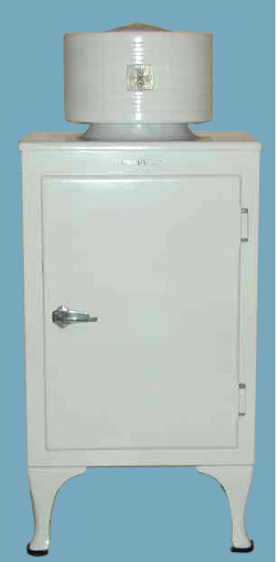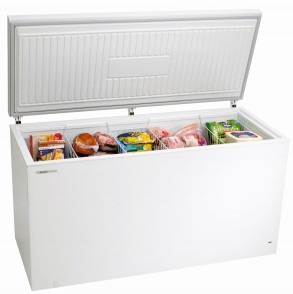Sign up for FlowVella
Sign up with FacebookAlready have an account? Sign in now
By registering you are agreeing to our
Terms of Service
Loading Flow

The first refrigerator to see widespread use was the General Electric "Monitor-Top" refrigerator introduced in 1927, so-called because of its resemblance to the gun turret on the ironclad warship USS Monitor of the 1860s. The compressor assembly, which emitted a great deal of heat, was placed above the cabinet, and surrounded with a decorative ring. Over a million units were produced. As the refrigerating medium, these refrigerators used either sulfur dioxide, which is corrosive to the eyes and may cause loss of vision, painful skin burns and lesions, or methyl formate, which is highly flammable, harmful to the eyes, and toxic if inhaled or ingested. Many of these units are still functional today. These cooling systems cannot legally be recharged with the hazardous original refrigerants if they leak or break down


Freezer
Freezer units are used in households and in industry and commerce. Food stored at or below −18 °C (0 °F) is safe indefinitely. Most household freezers maintain temperatures from −23 to −18 °C (−9 to 0 °F), although some freezer-only units can achieve −34 °C (−29 °F) and lower. Refrigerators generally do not achieve lower than −23 °C (−9 °F), since the same coolant loop serves both compartments: Lowering the freezer compartment temperature excessively causes difficulties in maintaining above-freezing temperature in the refrigerator compartment. Domestic freezers can be included as a separate compartment in a refrigerator, or can be a separate appliance. Domestic freezers are generally upright units resembling refrigerators or chests (upright units laid on their backs). Many modern upright freezers come with an ice dispenser built into their door. Some upscale models include thermostat displays and controls, and flat-screen televisions have even been incorporated.